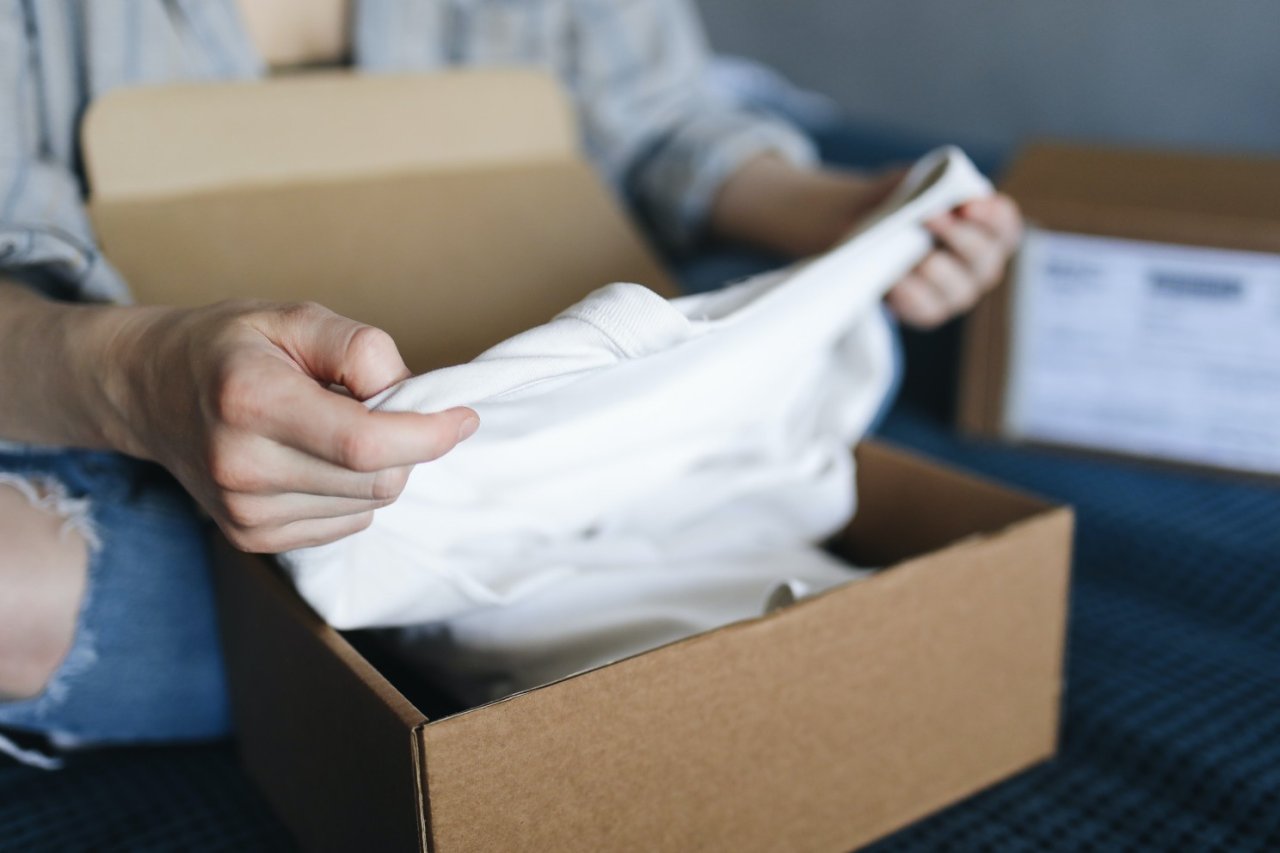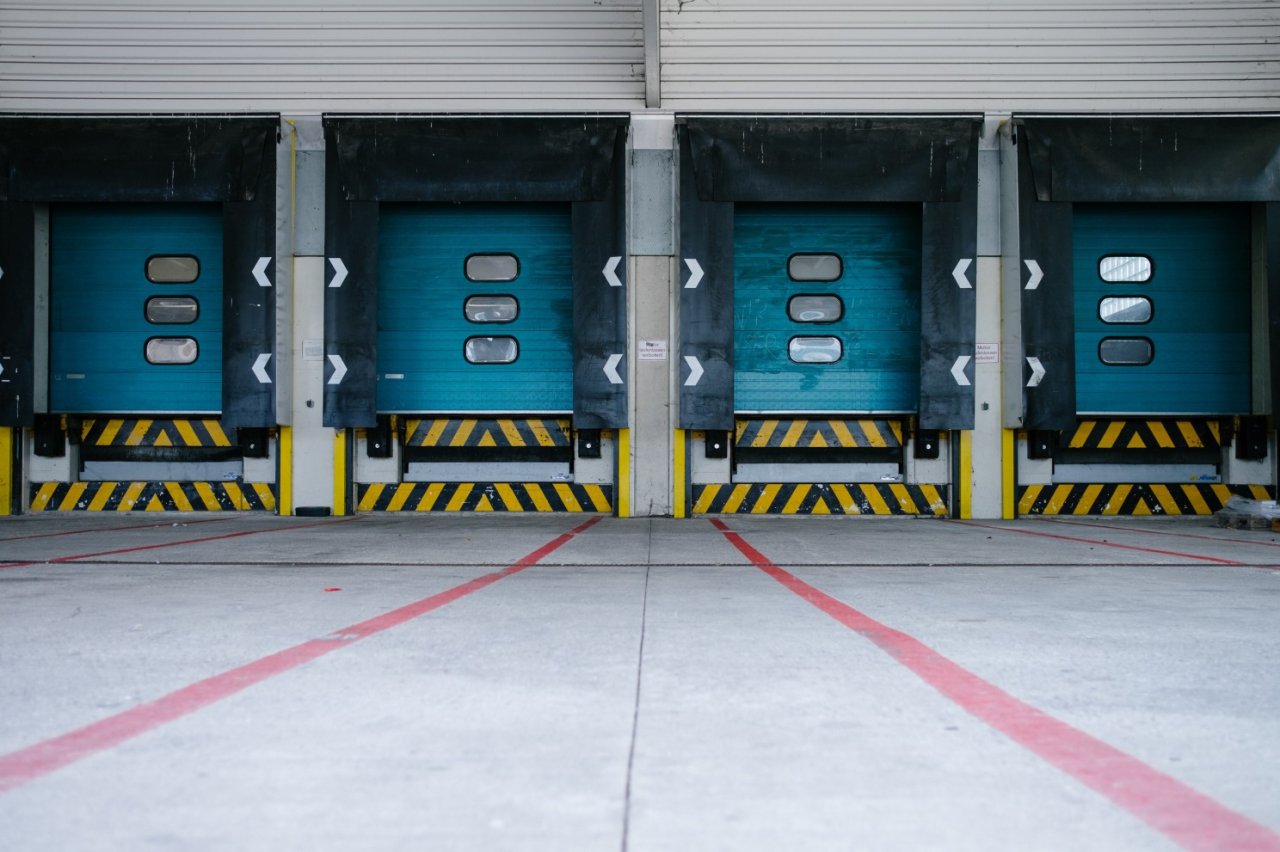Navigating the New EU Trading Landscape
If you’re selling goods to EU consumers in 2025, you’re operating in a fundamentally different landscape than just a few years ago. The days of the €22 import VAT exemption are long gone, replaced by a sophisticated web of schemes designed to streamline cross-border trade whilst ensuring proper tax collection.
Whether you’re a seasoned exporter or just starting to eye European markets, understanding the Import One Stop Shop (IOSS), One Stop Shop (OSS), and the Windsor Framework isn’t just helpful; it’s essential for staying compliant and competitive.
The stakes couldn’t be higher. In 2024 alone, an estimated 4.6 billion packages entered the EU from non-EU countries, equating to roughly 12 million parcels per day. VAT declarations through the IOSS system reached over €26.3 billion in 2023, marking a 35% year-on-year increase.
These regulations might seem daunting at first glance, but they’re designed to make your life easier. The EU has created these schemes specifically to reduce administrative burdens, streamline VAT collection, and create a level playing field for all traders.
This guide will walk you through everything you need to know about trading with the EU in 2025, focusing primarily on the IOSS system for low-value imports and how OSS can simplify your intra-EU sales. We’ll touch on the Windsor Framework’s impact on Northern Ireland trade but save the detailed analysis on this for a future article.
Introduction to IOSS and OSS
The VAT place of supply rules require VAT to be accounted for in the Member State where the consumer purchasing the goods resides. This creates a level playing field as the same VAT rate should apply to all sales.
Before Brexit, the distance selling rules applied, requiring retailers to register for VAT where sales exceeded the threshold in each Member State. This resulted in multiple VAT registrations being needed for many retailers, creating significant administrative and cost burdens. The distance selling rules were replaced by the OSS and IOSS schemes in 2021. In simple terms:
IOSS can be used for low value consignments of €150 or less where the goods are not in the EU when sold
OSS is used for consignments over €150 and for goods which are already in the EU when sold (requiring import entries to be completed/data transmitted
Understanding IOSS: Your Gateway to Simplified EU Imports
The Import One Stop Shop (IOSS) represents perhaps the most significant change to EU import procedures in decades. If you’re selling goods worth €150 or less to EU consumers from outside the bloc, IOSS isn’t just an option; it’s rapidly becoming the standard approach for serious businesses looking to grow their direct-to-consumer (DTC) EU sales.
What IOSS Actually Does
At its core, IOSS allows you to collect and remit VAT at the point of sale rather than at the border. This seemingly simple change has profound implications for both you and your customers.
Instead of packages getting held up at customs whilst consumers scramble to pay unexpected VAT requests from the delivering post or courier service, the goods flow smoothly through the clearance systems with the taxes already settled. The Mechanics Are Straightforward:
Register for IOSS in one EU member state
Charge the appropriate VAT rate for each customer’s country at checkout
File a single monthly return covering all your eligible EU sales
The alternative, having each package assessed individually at customs border, creates delays, additional fees, and frustrated customers who often abandon their purchases rather than pay these “unexpected” charges.

The €150 Threshold: More Important Than You Think
The €150 threshold isn’t arbitrary; it’s carefully designed to capture the vast majority of e-commerce transactions, whilst keeping administrative burdens manageable.
It’s crucial to understand that this threshold applies to the intrinsic value of the goods, not including shipping, insurance, or other charges. A €140 product with €20 shipping charge would not exceed the threshold and fall outside IOSS scope.
Registration: Simpler Than You’d Expect
UK based businesses (and any business which does not have an establishment in the EU) must appoint an intermediary to register for IOSS. The intermediary will be responsible for completing the IOSS registration, submitting VAT returns, and paying the VAT.
You can choose an intermediary based in any EU Member State, but it can be helpful to appoint one in a country where you have an existing VAT registration or one where you speak a common language. Hence Ireland is a popular choice for UK businesses.
Upon successful registration, you’ll receive a unique 12-digit IOSS identification number. This number becomes crucial for your logistics operations, as it must be included on every customs declaration for IOSS-eligible shipments or included within the EDI data feed passed to your postal providers or parcel carriers.
Monthly Filing: Keeping It Simple
IOSS tax returns are filed monthly, covering all eligible sales to EU consumers during that period. The return includes the total value of sales to each member state and the corresponding VAT collected.
The filing deadline is the last day of the month following the reporting period, with payment due simultaneously. This tight timeline means you need robust systems for tracking sales by destination country and calculating the correct VAT rates.
Popular ecommerce platforms such as Shopify can take care of this at the checkout when configured correctly. Many businesses find that investing in automated VAT calculation systems for their checkouts effectively reduces the administrative burden and mitigates many of the compliance risks.

Real-World Benefits: Beyond Compliance
Whilst compliance is obviously important, the real benefits of IOSS extend far beyond avoiding penalties:
Customers appreciate transparent pricing with no nasty surprises at delivery
Higher conversion rates and fewer abandoned carts
Elimination of multiple VAT registrations across different EU member states
Substantial administrative savings:
Amazon and other major platforms report that businesses using IOSS see up to 95% reduction in VAT-related administrative burdens compared to traditional approaches
Future Changes to IOSS
The EU is introducing changes to the IOSS from July 2028. The headline change is that IOSS VAT will be collected and remitted at the checkout for ALL transactions, irrespective of their value.
The EU is introducing changes to the IOSS scheme from July 2028. The headline change is that IOSS VAT will be collected and remitted at the checkout for ALL transactions, irrespective of their value.
Under the new ‘VAT in the Digital Age’ (ViDA) reforms, marketplaces will be liable for the VAT and Customs Duty collection for consignments, of all values, including those over €150.
Mandatory IOSS or local registration: Non-EU sellers must either register under the IOSS scheme or register for VAT directly in each Member State.
Liability for indirect customs representatives: Member States may hold customs agents jointly and severally liable for non-compliance when they act as indirect representatives.
Abolition of special arrangement scheme: Sellers will no longer be able to shift the import VAT responsibility to customers
Early preparation for these changes offers competitive advantages. Businesses that develop robust systems and processes ahead of the 2028 implementation will be better positioned to capitalise on the simplified procedures whilst competitors struggle with compliance challenges.
OSS for Intra-EU Sales: Streamlining Cross-Border Trade
Whilst IOSS handles imports from outside the EU, the One Stop Shop (OSS) Union scheme addresses retail sales where the goods are situated in Europe at the time of the sale. This includes goods with a consignment value of more than €150 where a customs entry is currently required and IOSS cannot be used.
VAT Registration
To use OSS, a business must also be registered for VAT in the country into which the goods have been imported. This is because the import has to be declared. If goods are imported into multiple Member States, multiple VAT registrations are required.
You will also have to appoint customs agents to act on an “Indirect” basis in each country of import, which can be difficult.
It can be simpler to have a single point of entry for goods into Europe as this would require a single VAT registration. The Netherlands provides a good place to set up if this is the proposed structure.
The €10,000 De minimis
There is a €10,000 de minimis threshold, applicable across all member states, per year. Below this threshold, VAT can be accounted for at the VAT rate in the EU country in which you are registered for VAT.
Once you exceed €10,000 in annual sales to any member state, you must charge that country’s VAT rate and either register for VAT there or use the OSS scheme.

Registration and Operation
OSS registration follows a similar pattern to IOSS: register in one member state and use that registration to cover all your intra-EU distance sales.
Instead of potentially needing VAT registrations in 27 different member states, you maintain a single registration and file quarterly returns. Each return covers all your cross-border sales, with VAT allocated to the appropriate member states based on customer locations.
Marketplace Obligations: Where Liability Sits
The role of online marketplaces in VAT collection has evolved dramatically, with platforms like Amazon increasingly taking on direct responsibility for VAT compliance.
The Deemed Supplier Revolution
Under current EU rules, marketplaces can be deemed to be the supplier for VAT purposes when they facilitate certain types of sales. This “Deemed Supplier” status means the marketplace, not the underlying seller, becomes responsible for charging and remitting VAT.
The rules apply particularly to sales where the marketplace stores goods. For sellers, this can be a significant advantage. Instead of navigating complex VAT registration requirements across multiple member states, you can rely on the marketplace to handle VAT compliance.
Amazon’s Approach to Deemed Supplier: FBA vs FBM
For Fulfilment by Amazon (FBA) sellers, Amazon typically takes on deemed supplier obligations because it stores and ships the goods.
It is common under these arrangements for the seller to be required to register for VAT in the Member State where Amazon has its warehouse to declare the import of the goods and the sale of the goods to Amazon.
Fulfilment by Merchant (FBM) sellers face different obligations. Because the merchant is the seller, the deemed supplier rules often don’t apply. FBM sellers typically remain responsible for their own VAT compliance.
The distinction matters because it affects both your operational model and compliance obligations. FBA offers simplicity but less control, whilst FBM provides flexibility but requires more sophisticated compliance management.
The 2028 Expansion
The upcoming changes in 2028 will significantly expand marketplace obligations. Currently, deemed supplier rules primarily apply to goods worth €150 or less. From July 2028, these obligations will extend to all import values, making marketplaces responsible for VAT and customs duties on a much broader range of transactions.
This expansion will likely accelerate the trend towards marketplace-managed compliance, as platforms develop systems to handle the increased obligations.
The Windsor Framework: An Overview
The Windsor Framework, which came into full effect on 1 May 2025, creates a unique trading environment for Northern Ireland that businesses must understand to operate effectively.
Northern Ireland operates under what’s effectively a dual VAT system. Goods consumed within Northern Ireland follow UK VAT rules, whilst goods that might enter the EU single market are subject to EU regulations.
The UK Internal Market Scheme (UKIMS) forms the foundation of the Windsor Framework’s simplified procedures. UKIMS authorisation allows businesses moving goods to NI to declare eligible goods as “not at risk” and avoid EU customs duties when moving goods from Great Britain to Northern Ireland for final consumption.
For businesses trading with Northern Ireland, understanding these provisions is essential, though we’ll explore this topic in greater depth in a future article.
Practical Framework: Choosing the Right Approach
With multiple schemes available and significant changes on the horizon, choosing the right approach to EU VAT compliance requires careful analysis of your specific business model, customer base, and operational capabilities.
Decision Matrix: Key Factors to Consider
Your choice between IOSS, OSS, traditional VAT registration, or marketplace-managed compliance depends on several key factors:
For businesses with primarily low-value sales to diverse EU markets, IOSS typically offers the best combination of simplicity and compliance
Businesses with higher-value products or concentrated sales to specific member states might find traditional VAT registration more cost-effective, particularly if they have significant input VAT to recover.
Cost-Benefit Analysis Considerations
Effective cost-benefit analysis goes beyond simple registration and filing fees. Consider the full cost of compliance, including system development, staff training, ongoing administration, and the opportunity cost of management time spent on VAT matters.
The benefits should include not just compliance assurance but also operational efficiencies, improved customer experience, and competitive advantages.
Businesses using IOSS often report higher conversion rates and lower customer service costs due to the elimination of unexpected charges and delivery delays.
Record-Keeping, Best Practices
Regardless of which schemes you choose, robust record-keeping is essential. The 10-year retention requirement for OSS and IOSS records means you need systems that can reliably store and retrieve transaction data over extended periods.
Automated record-keeping systems typically offer better accuracy and lower long-term costs than manual processes. The initial investment in proper systems usually pays for itself through reduced compliance risks and administrative efficiency.
Logistics Optimisation Strategies
Your choice of VAT compliance approach should align with your broader logistics strategy:
IOSS works best with logistics providers who understand the requirements and can reliably include your IOSS number on customs declarations.
Traditional VAT registration might be more suitable if you’re using local fulfilment centres or have complex supply chain arrangements.
Common Pitfalls to Avoid
One of the most common mistakes is treating VAT compliance as a purely technical issue rather than a strategic business decision. The choice of compliance approach affects customer experience, operational efficiency, competitive positioning, and ultimately profit margins and COGS.
Another frequent pitfall is underestimating the importance of systems integration. VAT compliance touches multiple aspects of your business, from pricing and checkout processes to logistics and customer service.
Finally, many businesses fail to adequately plan for announced changes. Treating the 2028 changes as a distant concern, rather than an immediate planning requirement will put these sellers at a disadvantage versus their competitors.

Your Roadmap to EU Trading Success
The EU trading landscape of 2025 is undoubtedly more complex than it was a few years ago, but it’s also more structured and, ultimately, more predictable.
The schemes we’ve explored; IOSS, OSS, and the Windsor Framework aren’t bureaucratic obstacles, but sophisticated tools designed to facilitate legitimate trade, whilst ensuring proper tax collection across a level playing field.
The key insight from our analysis is that successful EU trading in 2025 requires a strategic approach to compliance. Businesses that treat VAT obligations as an integral part of their operational strategy consistently outperform those that view compliance as a necessary evil.
For most businesses selling low-value goods to diverse EU markets, IOSS represents the optimal approach. The administrative simplicity, customer experience benefits, and upcoming expansion in 2028 make it a future-proof choice.
Businesses with more complex operations, higher-value products, concentrated customer bases, or significant input VAT recovery opportunities need more nuanced approaches.
Looking ahead to 2028, the expansion of IOSS scope and marketplace obligations will fundamentally change the EU trading landscape. Businesses that prepare early for these changes will be better positioned to capitalise on new opportunities whilst competitors struggle with compliance challenges.
Remember that compliance is not a destination but an ongoing journey.
The regulatory landscape will continue to evolve, new opportunities will emerge, and successful businesses will be those that maintain the flexibility to adapt whilst building robust foundations for sustainable growth.
Action Checklist for UK and Overseas Businesses:
Assess Your EU Trading Profile
Map your current and planned EU sales by value and destination
Determine if your products typically fall above or below the €150 threshold
Evaluate your current logistics and fulfilment model (direct shipping, local warehousing, marketplace)
Choose Your Compliance Approach:
For primarily low value direct to consumer shipments: Consider IOSS registration
For higher-value goods or local fulfilment: Evaluate OSS or traditional VAT registrations
For marketplace sellers: Understand your marketplace partners VAT handling policies
Implement Registration and Systems:
For IOSS: Appoint an intermediary (consider Ireland for language convenience)
For OSS: Register for VAT in your primary EU entry point(s)
Update your e-commerce platform to calculate and display correct VAT rates
Ensure your logistics providers can handle IOSS declarations
Establish Robust Record-Keeping:
Implement systems capable of 10-year data retention
Ensure transaction records include all required data points
Set up regular compliance reviews and audits
Prepare for 2028 Changes:
Monitor EU announcements regarding implementation details
Begin system upgrades to handle expanded IOSS scope
Review marketplace relationships considering expanded deemed supplier rules
Northern Ireland Considerations:
Determine if your goods are “at risk” of entering the EU single market
Apply for UKIMS authorisation if appropriate
Implement simplified procedures for eligible movements
Ongoing Compliance Management:
Schedule regular reviews of your EU trading profile
Monitor threshold limits for each compliance scheme
Stay informed about regulatory changes and implementation timelines
Employ specialist advisors such as SHIPMAX & Dains to ensure your plans are robust
